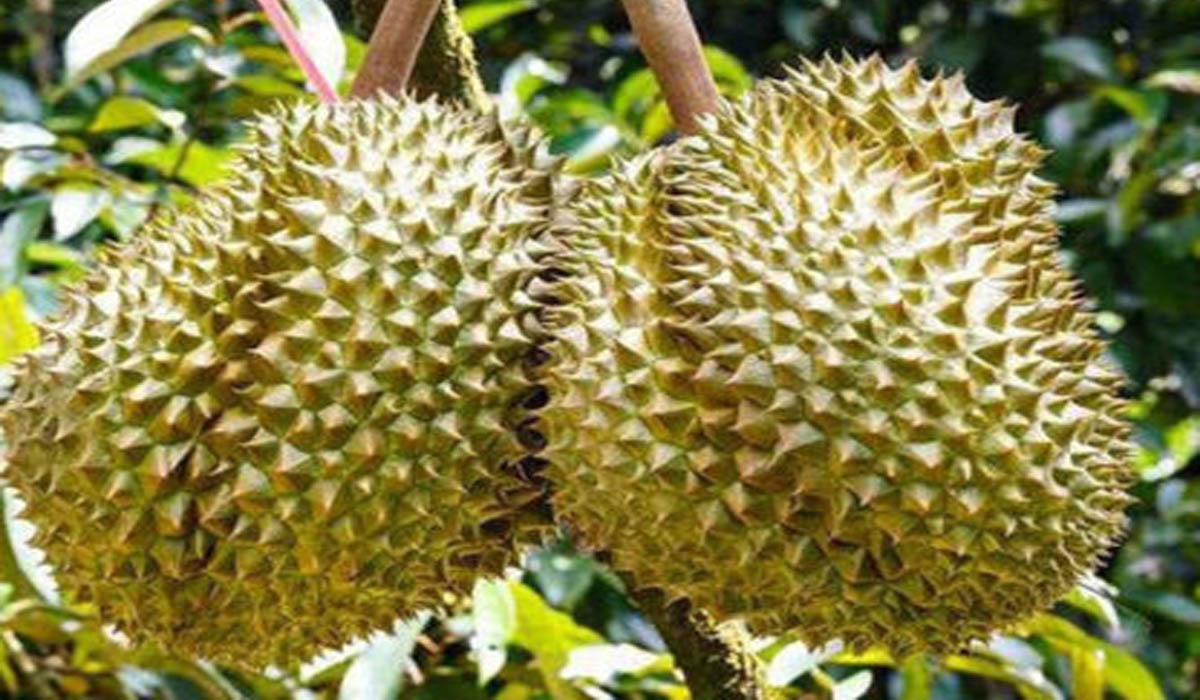
The durian fruit plant, scientifically known as Durio zibethinus, is a tropical tree belonging to the Malvaceae family. Native to Southeast Asia, particularly Malaysia, Indonesia, and Thailand, it is highly revered for its unique and pungent fruit.
Here is a description of the durian fruit plant:
Size and Appearance: The durian tree can reach a height of about 25-50 meters (82-164 feet) and has a straight trunk with grayish-brown bark. The tree’s canopy is dense and evergreen, providing ample shade. The leaves are large, oval-shaped, and arranged spirally on the branches. They are dark green on the upper surface and light green underneath.
Flowers: The durian tree produces large and attractive flowers. The flowers grow in clusters at the branches’ base and have a unique appearance. They have a reddish-brown exterior and can reach a size of 15-30 centimeters (6-12 inches) in diameter. The flowers emit a strong fragrance to attract pollinators, particularly bats and insects.
Fruit: The durian fruit is the highlight of the plant. It is distinctive for its large size and formidable thorn-covered husk. The fruit can weigh between 1 to 3 kilograms (2 to 7 pounds) and measure 15-30 centimeters (6-12 inches) in diameter. The husk is covered in sharp, thorny spikes, which serve as a protective layer for the fleshy interior.
Odor and Taste: Durian is renowned for its strong, distinctive odor, which some people find overpowering or unpleasant. It has been described as a mix of different scents, ranging from sweet and fruity to rotten onions or gym socks. However, many durian enthusiasts enjoy the fruit’s rich, creamy, and custard-like taste, which is often described as heavenly or addictive.
Cultivation: Durian trees thrive in tropical climates, requiring a constant temperature ranging from 24 to 32 degrees Celsius (75 to 90 degrees Fahrenheit). They prefer well-drained soil and ample sunlight. The tree takes around six to ten years to bear fruit, and each tree can yield a significant number of durian fruits during the peak season.
Cultural Significance: Durian holds a special place in Southeast Asian cultures, where it is often called the “king of fruits.” It is highly valued for its unique taste and aroma, and it is incorporated into various dishes and desserts. In some countries, durian is even considered a national treasure and a symbol of local identity.
Nutritional Value: Durian is rich in nutrients and provides a good source of dietary fiber, vitamin C, and several B vitamins. It also contains minerals like potassium, iron, and copper. However, it is high in calories and carbohydrates, so consumption should be moderated.
Despite its polarizing smell, the durian fruit plant remains a fascinating and sought-after botanical specimen, captivating both locals and tourists alike with its exotic appearance and flavor.
